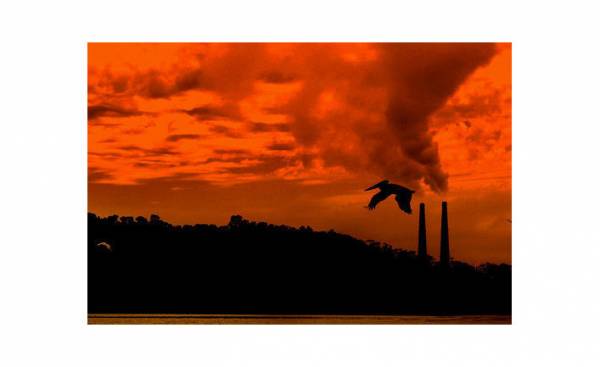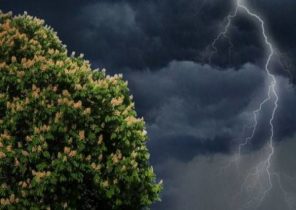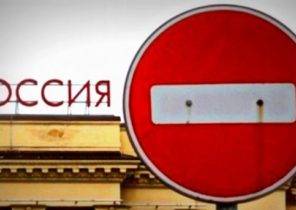
“In the morning, about 6 hours, we felt some kind of toxic smell. It is clear that everyone is very worried, — says Vladimir, — because we know that in high concentrations this gas can be very dangerous.”
The actor, Vladimir is walking with a child on the Playground at a block of flats in the district of Novokosino. When the family woke up a few hours earlier, they felt the fetid odor colorless poisonous gas — hydrogen sulfide.
Air measurements showed that the concentration in the region more than 50 times higher than acceptable norms, this led to problems with the respiratory system, the occurrence of itching, runny nose and cough.
When it begins to spread poisonous gas, can only shut the Windows, not to leave the house and wait for the wind this gas will carry.
“Moscow — a civilized modern city. And we simply can’t allow this”, — says Vladimir.
Huge emissions of toxic gas in Moscow
In March, April and may, the residents of the South-West of Moscow (SIC — approx. ed.) have regularly felt a sharp, sickening smell of hydrogen sulfide.
One of the biggest emissions happened on may 17. That day in such city areas as Kapotnya, LJUBLINO, Vyhino, Zhulebino, Novokosino, Kuzminki and Marino, was was a release of hydrogen sulfide, many times exceeding the dangerous limits.
In these areas of the city are home to more than two million residents.
Wind direction and weather conditions do not cause the local residents of the doubt, where is the source of toxic emissions.
Megapolis Moscow
Officially in the capital of Russia is home to 13 million people, but research based on the consumption of food and water, saying that the real number of inhabitants may amount to 20 million people.
A huge number of vehicles, creating endless traffic jams, and 50 large factories, power plants, refineries and industrial enterprises pollute the air large volumes of emissions.
Authorities claim that over the past five years the amount of harmful emissions into the atmosphere decreased by 11% due to the introduction of higher tariffs for Parking cars and a more intense development of the public transport system.
In addition, growing concern with environmental problems has led to the fact that in recent years the efforts of the city authorities was 50 new monitoring stations.
These station and registered emissions.
The perpetrators of environmental pollution associated with Norway
Vladimir Chuprov of Russian Greenpeace branch specifies the correspondent on a large refinery on the outskirts of Moscow, located a few kilometers away from densely populated areas.
“There is no doubt that all the fault of the plant, and that the emissions pose a threat to life and health of people. This is especially true of the elderly, children and people with asthma and allergies,” says Chuprov.
The plant belongs to the oil and gas giant “Gazprom Neft”. It produces 34% of all oil, diesel fuel and other petroleum products consumed by the city and the region.
Norwegian taxpayers own a small number of shares of the company, guilty of many emissions.
Last year the Norwegian oil Fund has invested 590 million euros in the company and now owns 0.42 percent in it.
They are called “foreign agents”
Putin has declared 2017 as the year of the environment, therefore, among the representatives of the ruling elite of Russia became popular to talk about the environment.
Despite this, the situation of many groups of defenders of environment has become worse since they were declared “foreign agents” due to the fact that they have received assistance from abroad.
In a recent report of the Russian socio-ecological Union and the Society for nature conservation argues that 28 environmental organizations listed as “foreign agents.” 11 organizations have already ceased to exist.
In addition, environmental activists have been repeatedly subjected to physical pressure and systematic persecution in loyal to the Kremlin media, as well as by paid “activists” working for an energy company.
Russian environmental activists are trying to encourage the culprit to the answer
Chuprov shows on the building of the plant, and go emissions.
“When the people themselves begin to feel a strong smell of rotten eggs, we understand that the concentration of hydrogen sulfide of at least twice the acceptable level,” — said the activist of Greenpeace.
And what can be done?
“There are three alternatives. To close the company, move away or invest in a huge amount.”
The first official reaction of the authorities to repeated measurements of poisonous gas was the assertion that no fine measuring instruments.
“This, of course, no one believes. The people themselves can “smell” these emissions, and to feel their own skin”.
But perhaps an equally big problem is that many residents do not believe that this might have something to do.
Russian oil and gas companies used to do what you want. They provide more than half of budget revenues.
“And the authorities just turn a blind eye,” says Chuprov.
However, the latter emissions has received wide media coverage and led to a massive campaign for collection of signatures. Now this leads to unexpected results.
Ecology forces to develop democracy on the ground
May 22 refinery in Moscow admitted that he had made the release of hydrogen sulfide, but the company denies that this was the cause of health problems.
According to news Agency Interfax, the company confirmed that the identified exceedances of standards for emissions.
On Friday evening the Russian Minister of natural resources and ecology Sergey Donskoy unexpectedly subjected the plant to harsh criticism.
For the first time during the numerous emission of poisonous gas, the Russian authorities insisted on who they blame:
“We found that in the smell, which is felt in the South-West of Moscow, to blame the Moscow refinery. Now the company itself has recognized the emissions,” said Donskoy on the Nevsky ecological Congress in St. Petersburg.
He warned that the Ministry of natural resources and environment will require that the plant was rebuilt and took measures to stop emissions.
“We’re going to call the factory to answer for these violations”.
A month of living in a toxic couple
“In other places in Russia the situation is much worse than in Moscow”, — says Vladimir Chuprov of Russian Greenpeace.
In April, a fire broke out on belonging to LUKOIL great field name Albulina in the Republic of Komi in Northwest Russia.
More than a month residents of the surrounding villages, which are home to mostly indigenous, were subjected to massive emissions of hydrogen sulfide.







